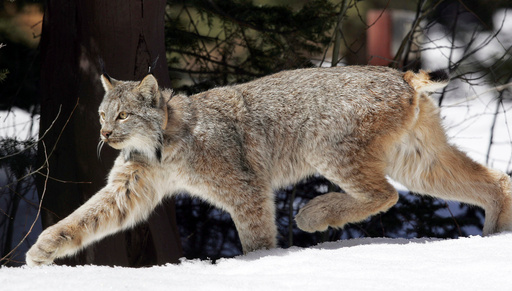
BILLINGS, Mont. — On Wednesday, U.S. wildlife authorities completed a strategy aimed at the recovery of Canada lynx, a species facing numerous threats due to climate change and human encroachment. They introduced new habitat protections specifically in the southern Rocky Mountains for these elusive forest-dwelling felines.
The future of this recovery plan is unclear with the impending administration of President-elect Donald Trump, who during his first term attempted to revoke the protective status that lynx have enjoyed since 2000 under the Endangered Species Act.
The newly proposed habitat encompasses nearly 7,700 square miles of forests and mountainous terrain across Colorado and northern New Mexico — a significant shift from prior U.S. Fish and Wildlife Service strategies, which primarily focused on recovery efforts in other regions like Wyoming, Montana, Minnesota, and Maine, mostly excluding the southern Rockies.
“It’s a major and positive shift,” remarked Matthew Bishop, an attorney with the Western Environmental Law Center, who has actively participated in legal efforts to safeguard lynx. “They had seemingly stepped back from their commitment to conserving lynx in Colorado, but this new proposal indicates a renewed dedication.”
Additionally, new protected habitats are being designated along the Idaho-Montana border, whereas the proposal suggests a significant reduction of protected areas in Wyoming.
In their latest update, wildlife officials indicated that some areas deemed unsuitable for lynx in the future would be removed from protection, while new locations, assessed to be more favorable for the species’ survival, would be included.
Lynx are naturally elusive creatures that inhabit cold, boreal forests and primarily feed on snowshoe hares. The ongoing impact of climate change threatens to reduce their snowy habitats and could impact the population of their primary food source, the snowshoe hare.
Even under the most optimistic scenarios regarding global warming, officials predict a troubling trend for lynx populations across the continental U.S. Approximately 1,100 lynx are believed to be distributed among five distinct populations, with the highest densities located in the northeastern U.S. and the northern Rockies.
Wildlife officials estimate a sharp decline in these numbers in certain areas, with a goal of maintaining a minimum population of 875 lynx across the five populations over the next two decades. Most of the viable living areas for lynx are found in Canada and Alaska, where they are more prevalent and where regulated hunting and trapping practices are permitted.
This latest development follows a court ruling from 2016 that criticized federal wildlife authorities for failing to designate protective measures for lynx habitats in regions of Colorado, Montana, and Idaho.
The proposed habitat safeguards in Maine and Minnesota will remain unchanged, with a final decision anticipated next year.
